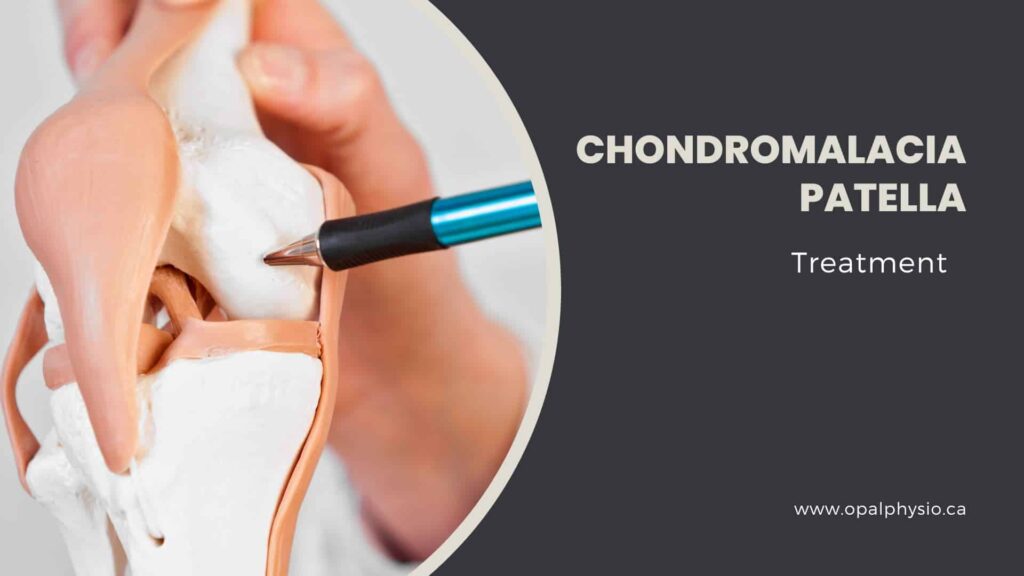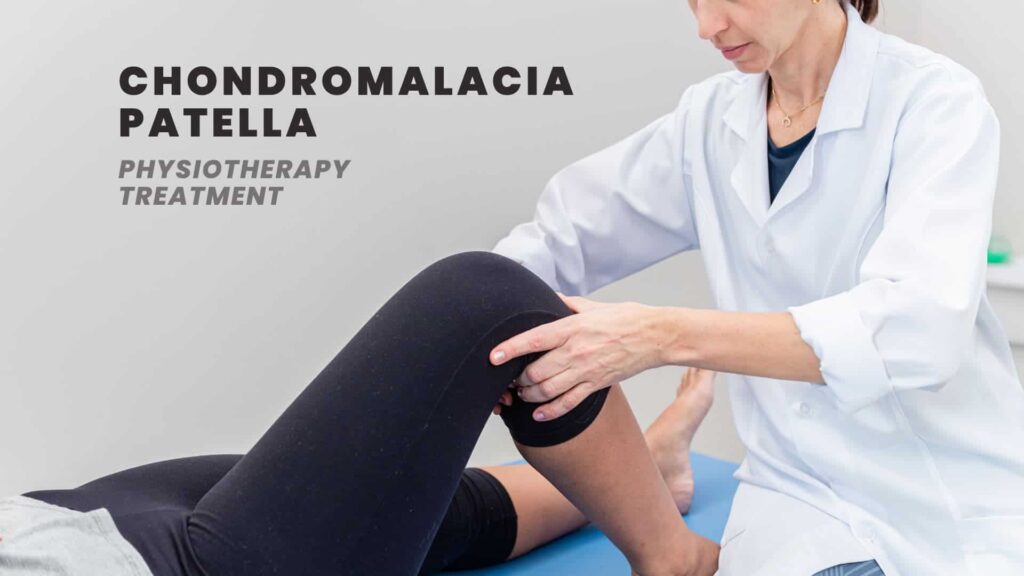Chondromalacia Patella
Chondromalacia patella is a condition that affects the knee joint and results in the deterioration of the cartilage under the kneecap. It is a type of arthritis that can cause the knee joint to become inflamed and painful. The condition is often seen in people who have had a previous injury to the knee, such as a torn ligament or a dislocated kneecap.
Chondromalacia Patella Treatment
Treatment for chondromalacia patella typically involves physiotherapy and exercises that strengthen the muscles around the knee joint. We at Opal Physiotherapy can provide treatment options for chondromalacia patella in Langley and help reduce pain symptoms and improve quality of life.

What is chondromalacia patella?
The Chondromalacia patella is where the cartilage under the kneecap (patella) softens and deteriorates. This can cause pain and inflammation in the knee joint. This condition is also known as patellofemoral pain syndrome (PFPS), runners knee, kneecap pain syndrome, and patellofemoral joint dysfunction.
The kneecap sits in a V-shaped groove at the thighbone’s (femur) end. The cartilage on the undersurface of the kneecap helps the kneecap move smoothly in this groove. This cartilage on the kneecap’s undersurface deteriorates, leading to inflammation, pain and grinding or cracking sensations.
Causes of chondromalacia patella
There are several possible causes of chondromalacia patella, including:
- Overuse or repetitive stress: Repeated bending, twisting, or high-impact activities, especially during sports, can cause wear and tear on the knee joint.
- Trauma or injury: Fractures, dislocations, or injuries to the kneecap, tendons, or ligaments around the knee joint can lead to chondromalacia patella.
- Anatomical abnormalities of the knee joint: Lower limb malalignment and patellar maltracking around the knee joint can cause chondromalacia patella.
- Joint instability: Any instability in the joints around the knee can cause abnormal loading to the joints increasing the risk.
- Muscle imbalances: Weakness or imbalance of the muscles around the knee, such as the quadriceps, hamstrings, adductor, and abductor muscles.
- Flat feet (pes planus): Flat feet can contribute to improper knee alignment and can cause pain.
- Knee surgery: Previous knee surgery, such as repair to the anterior cruciate ligament using one’s own patellar tendon as a graft, can increase the risk of chondromalacia patella.
- Age: Adolescents and young adults are at higher risk for chondromalacia patella due to rapid growth spurts that can cause short-term muscle imbalances.
- Sex: Females are more likely to develop chondromalacia patella due to having less muscle mass than males, which can cause abnormal knee positioning and increased lateral pressure on the kneecap.
It is essential to note that the development of chondromalacia patella is often multifactorial, with several factors contributing to the condition.
Symptoms of chondromalacia patella
The most common symptoms are:
- A dull, aching pain in the front of the kneecap, around, or behind the knee.
- Pain when going downstairs.
- The pain is often worse after sitting for a long time, such as at a movie theatre.
- Creaking or grinding sensation when the knee is moved.
- Knee swelling may occur in the knee, particularly after physical activity.
- Knee stiffness can make it difficult to move the knee smoothly.
- Retropatellar crepitus, which is a grating or crackling sound that may be heard when the knee is moved due to the roughened cartilage surfaces rubbing against each other
It is important to consult a healthcare professional if you experience persistent knee pain or any of the symptoms mentioned above, as they can help determine the cause and recommend appropriate treatment options.
Prevention of chondromalacia patella
Prevention of chondromalacia patella involves several strategies to protect the knee joint and maintain its health. Some of these strategies include:
- Avoid activities that put undue stress on your knees, such as kneeling, deep knee bends, and downhill running or jumping. Wearing kneepads during activities requiring time on your knees can also help.
- Warm-up and cool down appropriately.
- Perform gentle exercises that don’t strain the knees, such as swimming or cycling.
- Rest and stretching: Take regular breaks during activities, and incorporate stretching exercises to maintain flexibility and prevent muscle imbalances
- Maintain a healthy weight, as excess weight strains your knees.
- Engage in a well-rounded exercise program that equally trains all muscle groups to maintain muscle balance and reduce the risk of injury.
- Strengthen the muscles around your knees with exercises such as the quadriceps and hamstrings to provide better support for the knee joint.
- Wear shoes that provide good support and cushioning for your knees.
- Consult a physiotherapist for personalized exercise programs and treatment plans to address any alignment issues, muscle imbalances, or other factors that may contribute to the chondromalacia patella.

Physiotherapy for chondromalacia patella
There is no one-size-fits-all answer to this question, as the best physiotherapy approach for chondromalacia patella will vary depending on the individual case.
Why choose us for chondromalacia patella treatment in Langley?
- Our experienced physiotherapists specialize in treating chondromalacia patella.
- Our treatment approach is evidence-based and tailored to each individual’s needs.
- We focus on a holistic approach to treatment, addressing the symptoms and underlying causes of chondromalacia patella.
- We use a combination of manual therapy techniques, exercise prescriptions, and educational resources to promote healing and prevent further injury.
- We aim to help you regain strength, flexibility, and function, allowing you to return to normal activities without pain or limitations.
- We provide ongoing support and guidance throughout the treatment process, ensuring you have the tools and knowledge to maintain your progress even after therapy.
If you are suffering from chondromalacia patella, it is important to consult with our physiotherapist in Langley to develop an individualized treatment plan best suited to your needs. Call us today to make an appointment.
